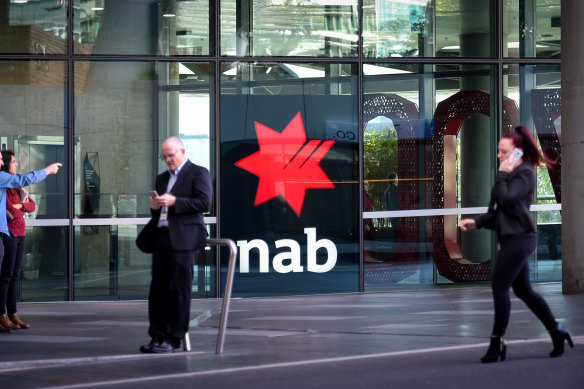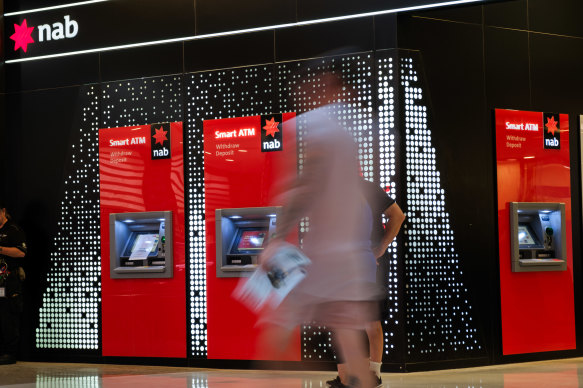This was published 3 months ago
NAB says more customers falling behind on mortgages
National Australia Bank said more customers are falling behind on their loan repayments, as it reported a 6 per cent fall in cash profits to $1.75 billion in the June quarter.
Releasing a trading update on Friday, NAB chief executive Andrew Irvine, who has been in the role since April, said cost-of-living pressures and high interest rates continued to weigh down mortgage holders.

NAB’s cash earnings of $1.75 billion were flat on the first half but 6 per cent lower compared to the same time last year.Credit: Penny Stephens
“The economic environment, including persistent inflationary pressures is challenging for our customers and we are here to help them,” Irvine said on Friday.
“While most customers are proving resilient, not unexpectedly we have seen asset quality deteriorate further in [the third quarter of 2024].”
NAB’s cash earnings of $1.75 billion, flat on the first half but six per cent lower compared to the same time last year, were squeezed by $118 million in credit impairment charges as the country’s second-largest bank faced higher mortgage arrears. This is on top of the $363 million credit impairment charge reported for the first half.
The bank said non-performing loans had climbed 11 basis points to 1.31 per cent of its overall portfolio as a result of “broad-based deterioration in the business and private banking business lending portfolio, combined with higher arrears for the Australian mortgage portfolio.”
Addressing a parliamentary inquiry on Friday morning, Reserve Bank of Australia governor Michelle Bullock said she understood many households would like to see a fall in interest rates, but the alternative of higher inflation for longer was much worse.
“Inflation has not been this high for a few decades and I think many people have forgotten how bad it is. Some younger people will not have experienced high inflation at all,” she said.
“There is a reason why there is so much talk about the cost of living, [because] high inflation hurts everyone. It reduces what people can buy with their wages, erodes the value of savings, and it disproportionately hurts those on low or fixed incomes.”
NAB’s net interest margin, a core measure of profitability, was stable, with small reductions from lending competition and customers moving their savings to high-yield savings accounts.

Andrew Irvine says more customers are facing mortgage pain. Credit: Eamon Gallagher
However, analysts said NAB has appeared to reduce its home loan prices over the past month to lure more customers, potentially putting further pressure on the margin over the next six months.
Revenue fell one per cent, and the bank said it had found productivity savings of $400 million in the 2024 financial year.
Irvine said the bank’s lending balances grew one per cent. Loans to small and medium businesses were up 3 per cent, while home loans lifted 1 per cent.
Jefferies analysts Matthew Wilson and Christian Mazza said NAB’s core profits were continuing to shrink, and the bank’s strategy to target franchises was the most vulnerable in this economic environment.

Analysts say the core profits of the NAB are starting to shrink.Credit: Oscar Coleman
“Asset quality is clearly deteriorating to levels not seen for some time,” the pair said in a note to investors. “Low unemployment and elevated asset prices remain the linchpin.”
E&P analyst Azib Khan said while NAB’s net interest margins were better than expected, its business banking asset quality is deteriorating.
“Revenue softness has been offset by a lower-than-expected credit impairment charge as well as costs being a touch better than expected,” Khan said.
The element of increasing concern is asset quality. Despite the bad debt charge being lower than expected, there continues to be broad-based deterioration in the business lending portfolio.”
NAB shares closed the trading day 1.5 per cent stronger at $36.48.
The Business Briefing newsletter delivers major stories, exclusive coverage and expert opinion. Sign up to get it every weekday morning.